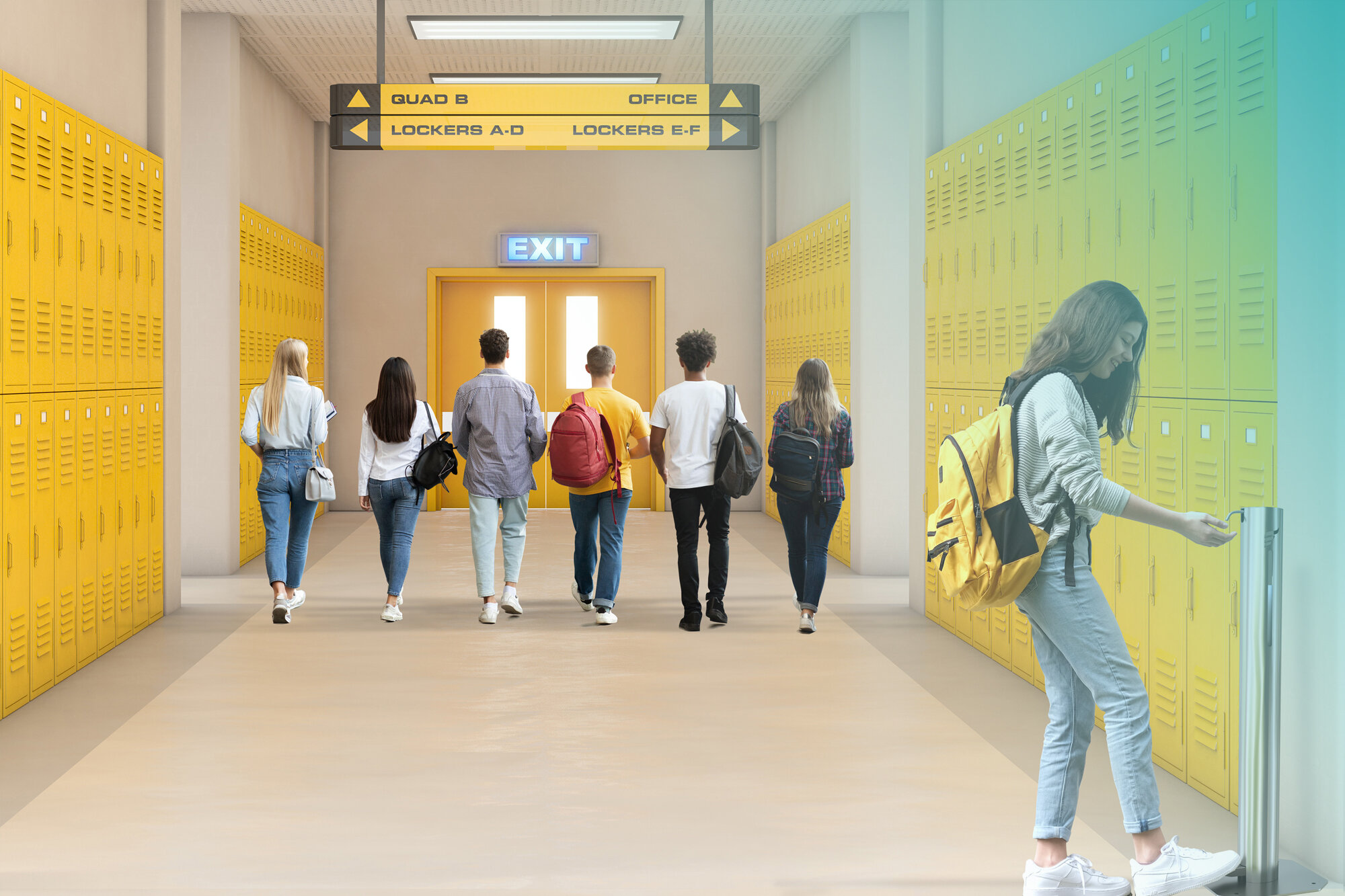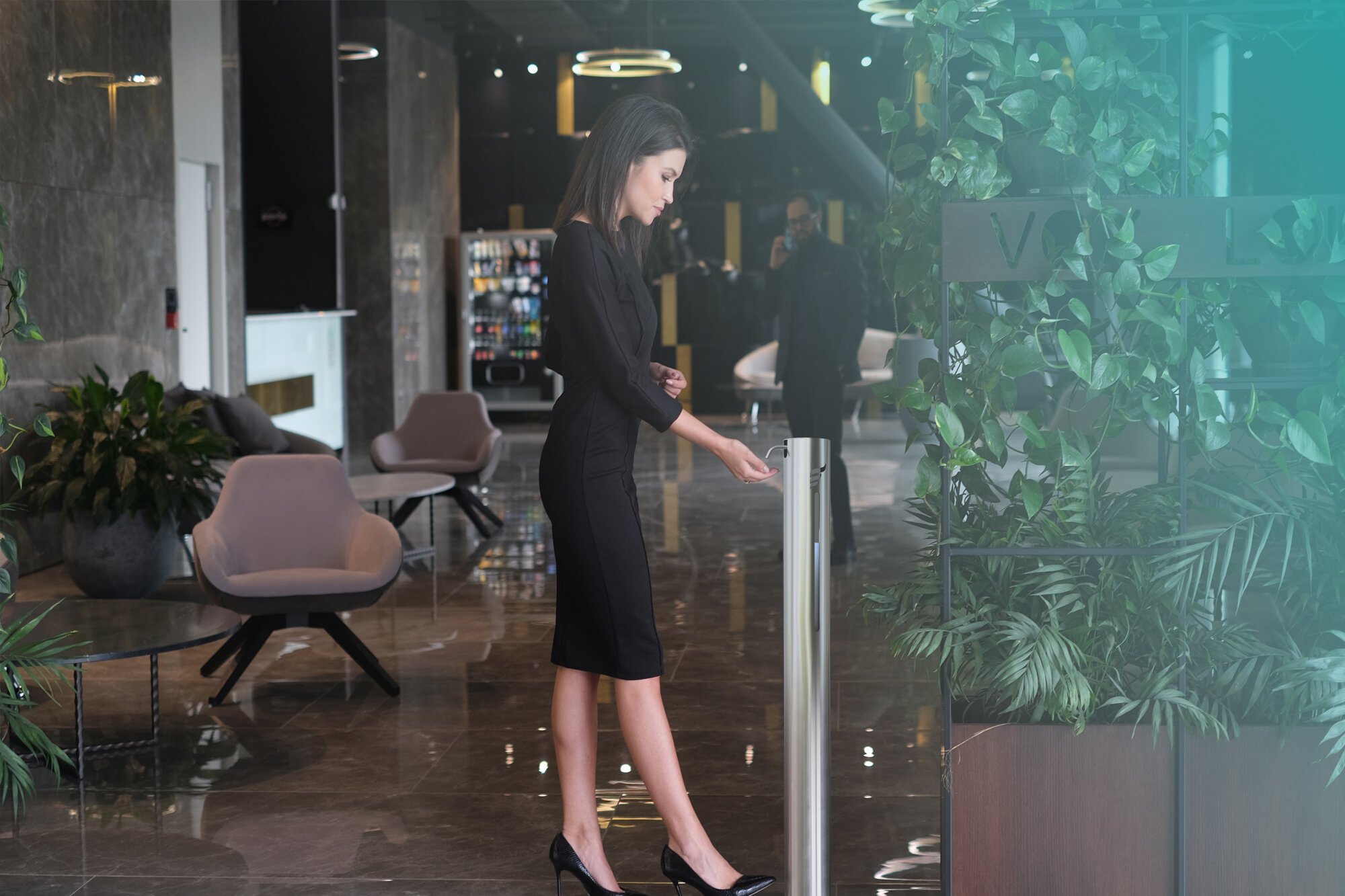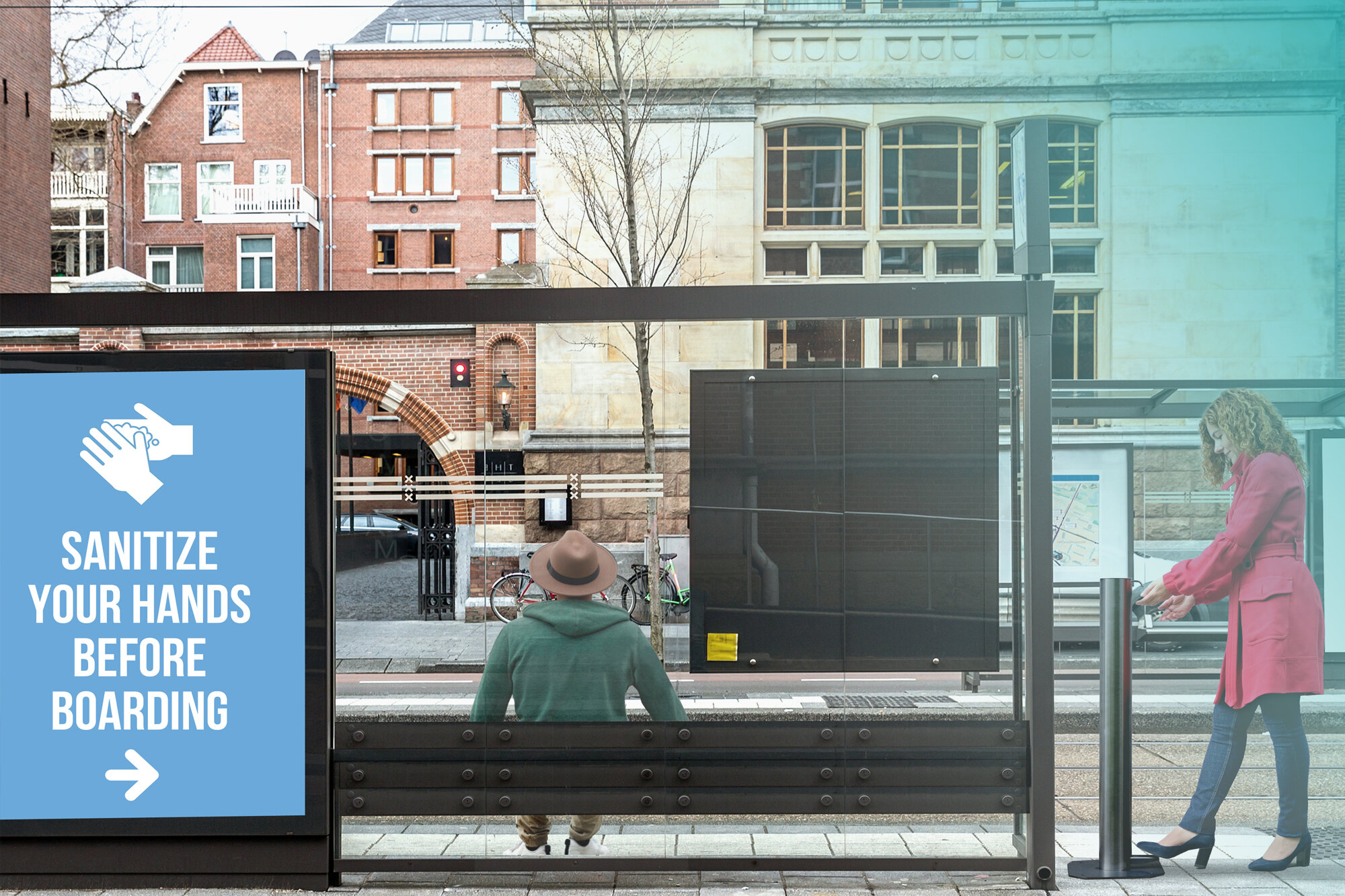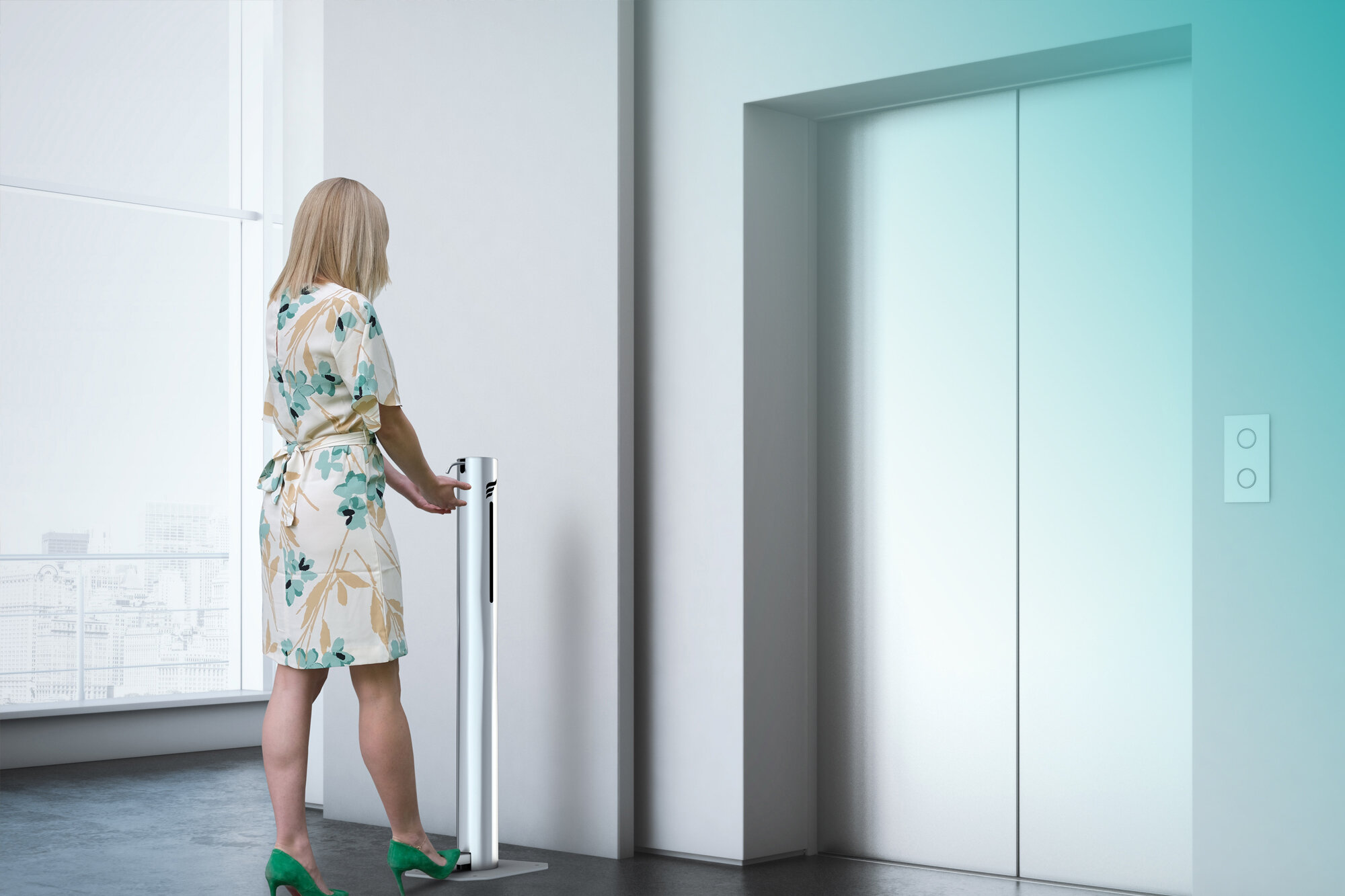FAQ
Here you will find the answers to the most frequently asked questions. Your question is not answered here? Please use our contact form.
Overall
We usually ship all orders with the delivery service provider DPD or pallets by freight forwarding.
Our disinfectant dispensers are manufactured in the EU. The air purifiers are made in China, just like your smartphone.
Our friendly customer service is available for you Mon-Thu from 8am to 6pm and Fri from 8am to 5pm!
In case of warranty claims please contact us by email.
Delivery costs in Germany
| up to and including 1,5 kg | 4,95 € incl. VAT |
| over 1,5 kg to 31 kg | 9,90 € incl. VAT |
| each additional 31 kg | 9,90 € incl. VAT |
| from 350,00 € incl. VAT | free of charge |
Delivery costs EU countries (per 31 kg)
| Austria (AT), Belgium (BE), Netherlands (NL), Luxembourg (LU) | 19,90 € incl. VAT |
| France (FR) | 19,90 € incl. VAT |
| Spain | 19,90 € incl. VAT |
For consumers:
Our delivery area covers Germany.
For companies:
Our delivery area includes Germany, Austria, Belgium, the Netherlands, Luxembourg, France and Spain.
For further information please see our General Terms and Conditions.
If you live outside our delivery area and are interested in our products, please send us an email.
In our webshop you have the possibility to view our range of products in detail. In addition to pictures, there is also further and detailed information on the products in the form of videos and brochures. You will find these directly next to the product.
To select a product, select the corresponding entry in the navigation. You can put the desired quantity of the respective product into the shopping cart. You can access the shopping basket by clicking on “Checkout”. After pressing the button “Proceed to checkout” you will be asked to enter your data and select the payment method. You can order as a guest, create a customer account or log in if you have a customer account. You then have the possibility to check your order again and correct it if necessary. By confirming the “Buy now” – button you place a binding order. After submitting the form you will receive a confirmation of receipt of your order. This is not yet a binding order confirmation. The contract is only concluded when we accept your offer to conclude the contract. This is done at the latest when we confirm the delivery or deliver your order.
ioxy air purifier
Air purifiers are devices that clean the air in a room. They work with several filters connected in series, which form the core. The room air is sucked in by the air purifier and transported through the individual filters, purifying it in the process. The most commonly used filters are:
- Prefilter: Filters the coarsest dust, dirt or pet hair out of the air. Prefilters are usually washable.
- HEPA filter (High Efficiency Particulate Air – micro particle filter): This filter filters dust, bacteria, viruses, suspended particles, pollen, smoke etc. from the air very efficiently. This filter is particularly important for allergies.
- Activated carbon filter: The activated carbon filter is often combined with the HEPA filter, but occasionally it is also found separately in air purifiers. The activated carbon filter filters organic molecules and thereby decomposes or catalyses gases and unpleasant odours.
- Photocatalytic filters: These filters consist of a titanium dioxide coating. They are often combined with UV light to break down bacteria and viruses.
When buying an air purifier, look for the following criteria:
- What filter technologies do air purifiers use? Make sure that the air purifier of your choice has different filters with a high filtration capacity, such as HEPA filters, activated carbon filters and catalytic filters.
- How much percent of harmful microorganisms are filtered out? The so-called degree of separation provides information about this. The higher the degree of separation, the more efficient the air purification (e.g. 99.97%).
- What air volumes can be filtered? Usually a square metre number or a cubic metre number is given. The correct code number is CADR (Clean Air Delivery Rate) A suitable air purifier should clean the room air about 3 times per hour.
-
- Example calculation: room size 40m² with 3m ceiling height -> 40×3= 120m³ -> 120m3 x 3= 360 m³/CADR
.
- Our tip: Combine several units for larger rooms.
-
In order to remove pollutants of different sizes and structures from the air as completely as possible, several filter stages with different operating principles are used in air cleaners:
– Pre-filter to remove coarse dirt particles (dust, lint, hair, …).
– Activated carbon filters to remove larger pollutant molecules and chemically bind gaseous toxins.
– Antibacterial cotton filters
– HEPA filters as the most important and technically most complex component, as the smallest and sometimes most dangerous pollutants such as pollen, fine dust, bacteria and viruses are removed here. ioxy filters of performance class HEPA14 (EN1822) remove particles from a size of 0.26µm almost completely with a separation efficiency of 99.996%.
Air filtration is supplemented by air treatment measures:
– Anion generator for pollutant binding (formation of larger and heavier molecules) before filtering.
The noise sensation when using air purifiers is essentially dependent on three factors:
– Selected power level
The ioxy Two ranges between 24.0 dB and 54.8 dB average sound pressure level, depending on the power level.
The ioxy Two has 8 different power levels.
The ioxy Pro ranges between 28.5 dB and 54.4 dB average sound pressure level depending on the power level.
The ioxy Pro has 7 different power levels.
For comparison: The typical running noise of a refrigerator is about 40 dB.
– Installation conditions
The ioxy Pro should be placed on a solid floor to avoid resonance. If the floor is vibrating (e.g. wooden floorboards), a damping pad may be useful.
– Personal distance from the unit
In addition to operation on the unit or with the remote control included in the scope of delivery, the air purifier can also be controlled from a smartphone using the Smart Life App. This is available in the relevant app stores. To configure the app for your ioxy air purifier, you must connect your smartphone to the same WLAN where your ioxy device is to operate and complete the registration process in the app.
HEPA filters are the most important component in air purifiers, as they reliably ensure the removal of harmful bacteria and viruses. Their technical design enables their almost complete removal from the room air:
HEPA13 (according to EN1822): separation efficiency 99.95%
HEPA14 (according to EN1822): separation rate 99.996%
To ensure optimal function and effectiveness of the air purifier, a visual indicator (see also operating instructions) reminds you both of the recommended regular cleaning of the pre-filter and of the required replacement of the activated carbon and HEPA filters (ioxy Two) or the HEPA composite filter (ioxy Pro).
For maximum effectiveness, the air purifier should be placed as freely as possible on a solid, resonance-free floor surface. The distance to walls, pieces of furniture and other objects must be at least 30 cm. In particular, the supply air and exhaust air openings of the air purifier must be kept free, which also requires that no objects are placed on the unit. Positioning the unit as centrally as possible in the room optimises the air exchange.
Most unpleasant odorous substances are bound to dust and fine particles. They are therefore extracted from the air in the filters and bound, so that a noticeable freshening effect occurs. The air purifier cannot eliminate odours that result from purely gaseous chemical compounds, such as ammonia, chlorine and sulphur compounds. However, these should not or must not be part of the breathing air in closed rooms anyway.
The power consumption of the air purifier at the highest fan setting is 85.8 watts (ioxy Two) / 96 watts (ioxy Pro).
Assuming a daily 12-hour operation, 20% of which is at the highest power level and the rest at lower power levels, this results in a power consumption of approx. 0.6…0.7 KWh/day. In standby, the consumption is 0.73 watts (ioxy Two) / 2.05 watts (ioxy Pro).
Additional air humidification in closed rooms has two advantages:
1. the survival time of free coronaviruses decreases considerably with increasing humidity. At a relative room humidity of 40% at 21o C, it is shorter by a factor of 10 than at a humidity of 25%, which is not atypical especially in the cold season, and at which the survival time can be more than 30 hours.
2. a low relative humidity of less than 40% leads to a drying out of the mucous membranes in the upper and lower respiratory tract. They thus lose their protective function against invading disease-causing viruses and bacteria.
During the filter’s service life, a visual indicator informs the user that it must be cleaned regularly. If the room air is heavily contaminated with particles or dust, we also recommend cleaning the pre-filter once a week.
In addition, regular cleaning of the particle sensor and the anion generator is necessary for proper functioning of the air purifier. (Detailed information can be found in the operating instructions).
Only for ioxy Two:
The water tank of the humidifier (capacity max. 1.4 litres) must be refilled regularly for continuous supply of the evaporation unit.
A low water level is indicated by a flashing LED. Even without water, the unit purifies the air, so this function is optional.
Negatively charged ions (anions) are generated in the ioniser of the air purifier and released into the ambient air. They combine with positively charged dirt particles to form larger and heavier clusters that are easier to filter out.
Last but not least, a higher proportion of anions in the air we breathe has a significant influence on our well-being. The feeling of freshness after thunderstorms, in the forest and at waterfalls results from a very high ion saturation of the air.
This function is optional.
An air purifier cannot be a substitute for a regular supply of fresh air in closed rooms, because both the purity of the air and its oxygen content are decisive for health and well-being. The latter decreases relatively quickly, especially in heavily frequented areas (e.g. classrooms and meeting rooms), while the CO2 content increases at the same time due to the exhaled air.
Continuous CO2 measurement is therefore very useful both with and without the use of air purifiers, as appropriate measures such as ventilation and occupancy concepts can be implemented on the basis of these measured values.
“A new study says that the spread of coronavirus can be reduced with air purifiers. These are said to reduce the dangerous aerosols in the air.” cf. the following article summarising this study:
It lists that air purifiers with a HEPA13 filter can already filter out most of the viruses, germs, etc. from indoor air and may be “recommended” for normal use.
More information can also be found in this study.
Current press reports can be found here:
ioxy Sens
The CO2 content of the air in closed rooms is a very clear indicator of their quality. When people are present, exhalation causes a constant enrichment of the room air with CO2 with a simultaneous reduction of the oxygen content, as well as a possible increase in the contamination with bacteria and viruses.
The CO2 monitoring can thus be used to derive immediate measures to improve the air quality, such as ventilation breaks and optimised room occupancy plans, as well as, last but not least, necessary air-conditioning installations in critical conditions, e.g. when large groups of people frequently stay in relatively small rooms for long periods of time.
The ioxy Sens One makes it possible to assess the air quality even without specialist knowledge, as it also converts the precisely displayed numerical values (ppm CO2) into an easily understandable traffic light assessment. Thus, for example, when the traffic light changes from green to yellow, the room should be ventilated as soon as possible, and when it changes to red, the room should be ventilated immediately.
With the graphical representation of the CO2 content over time, the ioxy Sens One provides additional information on the development of the air quality.
The graphical representation describes the development of the CO2 content of the room air over time. In addition to the numerical and traffic light display, this enables additional conclusions to be drawn, e.g. for the development of break plans and the maximum permissible room occupancy.
Continuous CO2 measurement is very useful both with and without the use of air purifiers. An air purifier cannot be a substitute for a regular supply of fresh air in closed rooms, because both the purity of the air and its oxygen content are decisive for health and well-being. The latter decreases relatively quickly, especially in heavily frequented areas (e.g. classrooms and meeting rooms), while the CO2 content increases at the same time due to the exhaled air. Based on the CO2 readings of the ioxy Sens One, appropriate measures such as ventilation breaks and room occupancy concepts can be implemented.
No, the unit is ready for use immediately.
The battery of the ioxy Sens One has a capacity of 3,000 mAh. The battery life is approx. 4 hours. The battery is charged and the ioxy Sens One is permanently powered via a 5 volt power supply unit with micro USB connection (can be loaded with > 1,000 mA). The accessories are included in the scope of delivery.
The ioxy Sens One measures CO2 levels in the range 400-5,000 ppm with an accuracy of 50 ppm.
The assignment to the traffic light display is made in three ranges:
Green (air quality good): 400-800 ppm
Yellow (air quality still sufficient): 800-1,200 ppm
Red (air quality poor): > 1,200 ppm
Astreea® product range
For the smaller models, the selection is defined by the specified target group of small children or primary school children. For all other models, the intensity of use and the resulting refill intervals are relevant for the model selection. We recommend extrapolation based on an estimate of the number of users per day.
Example:
- estimated daily number of users: approx. 200
- desired refill interval: 1 x per week
- weekly applications: 6 days of 200 applications = 1,200 applications
- perfectly suitable: Model M, whereby it is no disadvantage to choose the next larger model if necessary.
In the Astreea® disinfectant dispensers, both water-based and gel disinfectants can be used, manufacturer independent. Please make sure that the consistency of gel-shaped products is not too firm, as this can hinder the pumping process and the dosage. Do not use disinfectants containing contaminated or undissolved solid components, as they can cause irreparable damage to the pump.
It is important to check the product information on the composition and effectiveness of the disinfectant. Particularly very cheap products often have an insufficient concentration of the active ingredients or have an exclusively antibacterial effect, which is unacceptable.
Furthermore, when choosing a disinfectant, you should make sure that it is odourless or has a discreet fresh scent. This is essential for the perception of the environment at the dispenser as well as for the readiness for use. All fragrances perceived as clean but rather clinically perceived are unsuitable in most areas of application.
The dispensers are supplied fully assembled except for the XXL model and are ready for immediate use after filling with disinfectant. They are also stable without anchoring, but can be fixed with two floor screws. Alternatively, the stability without anchoring can be increased by using an optionally available base weight.
The manufacturer provides a lifetime guarantee on all stainless steel components of the disinfectant dispensers.
We can optionally engrave your disinfectant dispensers with a logo on the lid and/or supply them with a coloured or individually designed film lamination. Please contact us now for individual advice and a quotation.
Hand lever and push button
For barrier-free use, the dispensers can be equipped or upgraded with manual operation, with a choice between a push-button or a hand lever.
Information display
This is attached to the dispenser and can contain, for example, instructions for use.
Base weight
This increases the stability of the dispenser if it is not anchored to the floor.
Exchange bottles and spare pumps
For quick and convenient refilling of the dispenser.





